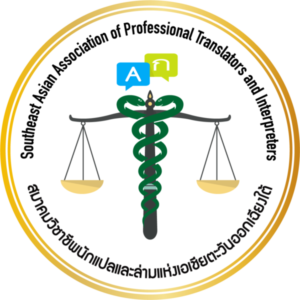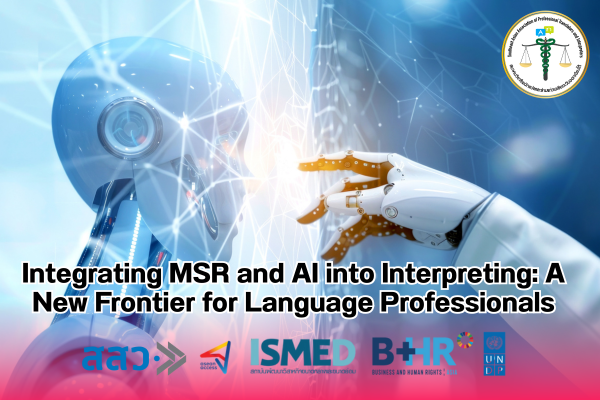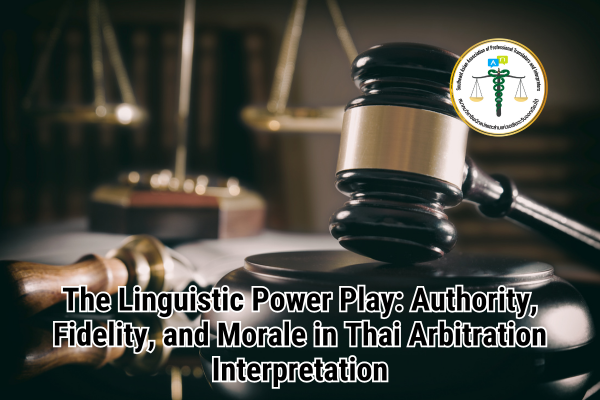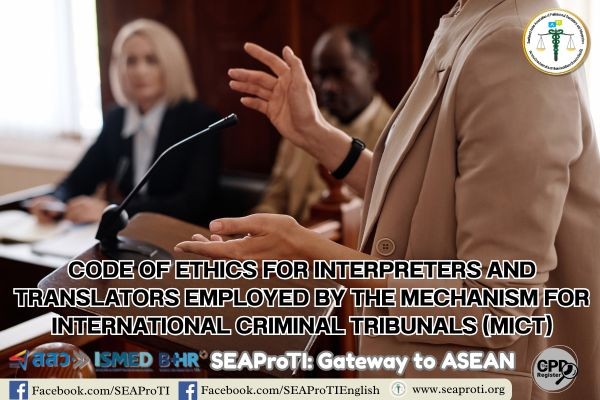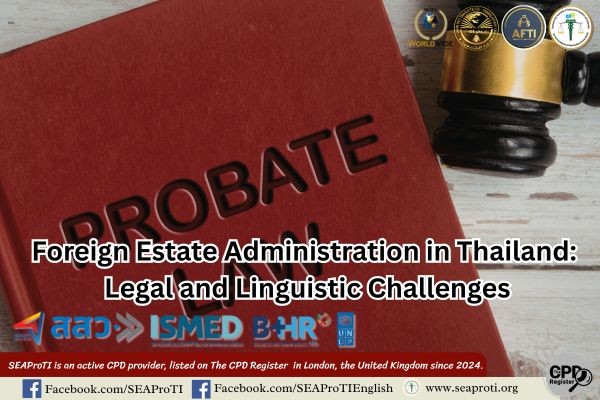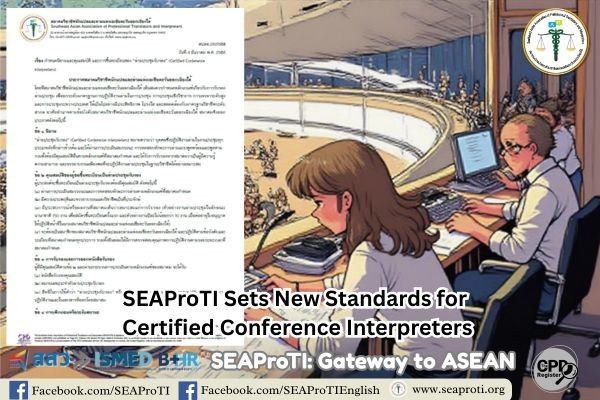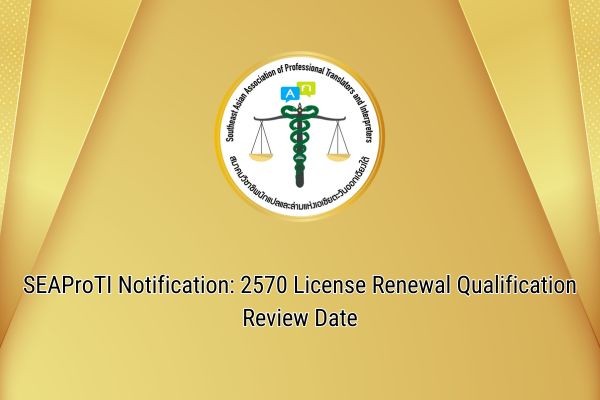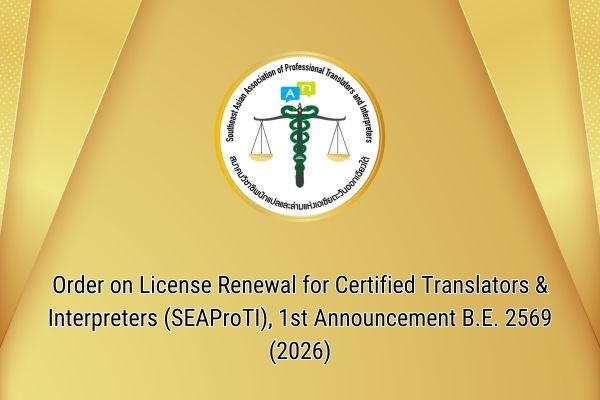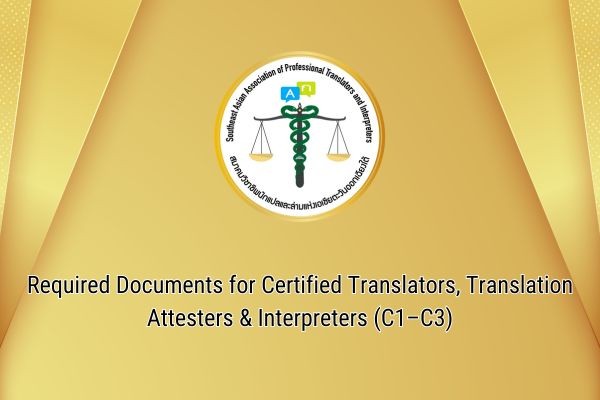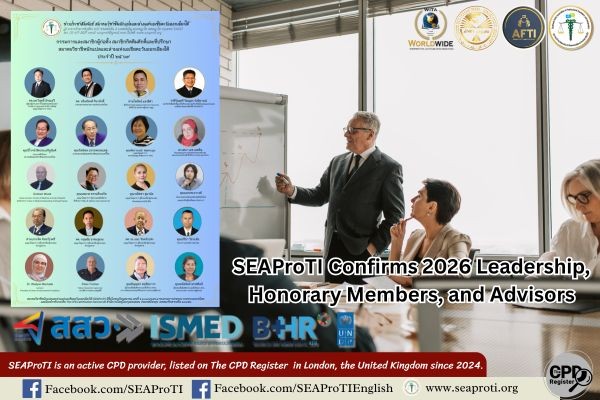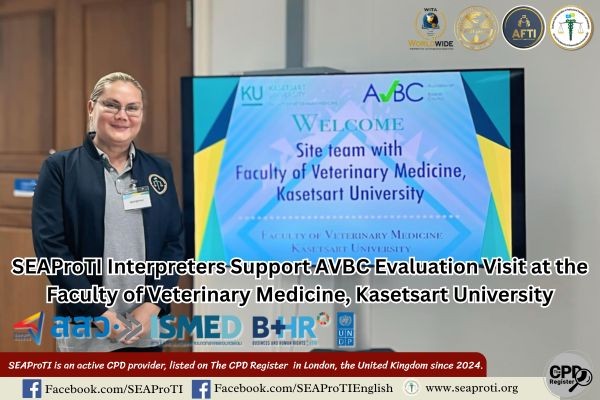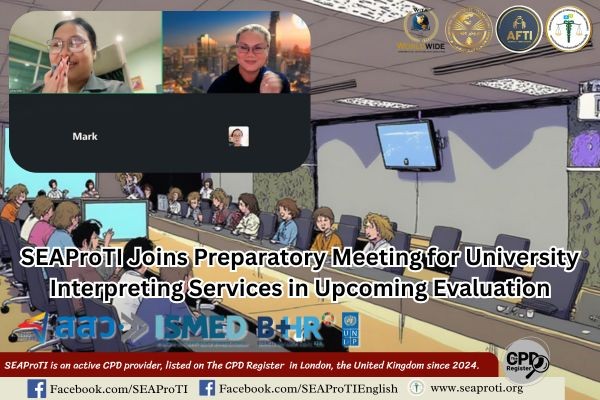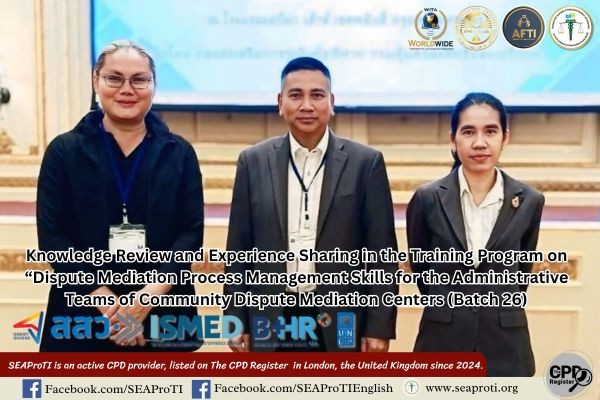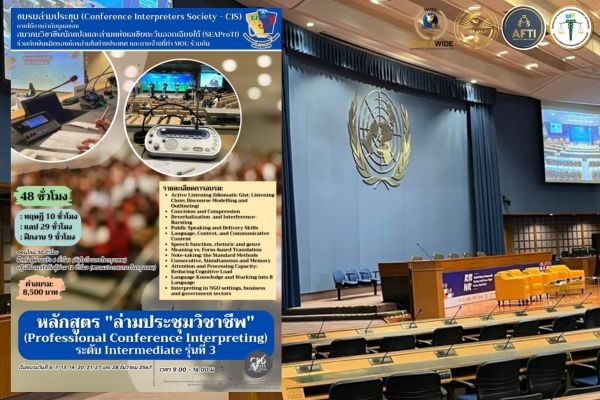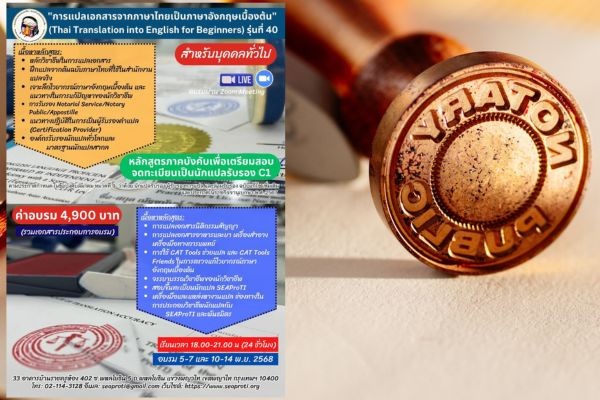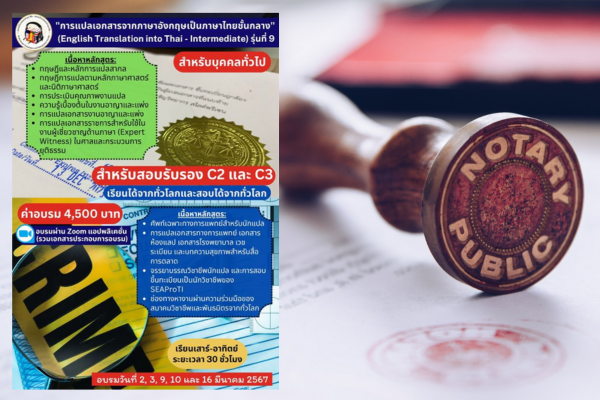Integrating MSR and AI into Interpreting: A New Frontier for Language Professionals
6 June 2025, Bangkok – As the world becomes increasingly interconnected, interpreters—especially those working in simultaneous interpreting—face growing demands in speed, accuracy, and cognitive stamina. Technologies such as Multilingual Speech Recognition (MSR) and AI-Assisted Interpreting have emerged as crucial tools to enhance the quality and efficiency of interpreting in high-pressure, multilingual contexts.
MSR systems can convert spoken language into text in multiple languages within a single platform. This significantly reduces the risk of errors caused by unfamiliar accents or rapid speech. According to Prasad et al. (2023), MSR can reduce word error rates by over 30% compared to traditional systems without requiring separate training for each language.
Meanwhile, AI-assisted interpreting systems—also known as CAI (Computer-Assisted Interpreting)—provide real-time support to interpreters by extracting and displaying key terminology and numerical information from the speaker’s speech. A prime example is InterpretSIMPLE developed by Liu et al. (2024), which demonstrated 98.92% accuracy in identifying domain-specific terminology and processed data rapidly enough to avoid interrupting the interpreter’s flow.
These technologies allow interpreters to focus more on conveying meaning and less on memorizing or retrieving technical terms, thereby reducing stress and improving performance. However, several limitations must be addressed. MSR systems still perform best in high-resource languages like English and Western European languages. For low-resource languages such as Thai, Burmese, or Khmer, limited linguistic data hampers the development of accurate models (Reichel et al., 2023).
Another major concern is the ethical use of AI. Interpreters must retain the authority to verify, override, or reject machine-generated suggestions when they are inappropriate, misleading, or contextually inaccurate. Especially in sensitive settings—such as courtrooms or diplomatic conferences—misinterpretations can have serious consequences.
The role of interpreters is evolving. No longer merely message conveyers, interpreters today must become evaluators and decision-makers capable of collaborating with technology in real-time. As Bendazzoli (2024) argues, interpreters need AI literacy—the capacity to understand how AI tools function, critically assess their outputs, and make ethical decisions when using them. Horváth (2022) further emphasizes that interpreters should have the right to challenge or reject machine-generated translations that violate professional or cultural norms.
In summary, MSR and AI-Assisted Interpreting technologies offer tremendous potential to enhance the speed, accuracy, and reliability of interpreting. Rather than replacing human interpreters, these tools are best viewed as intelligent assistants that can support interpreters in complex, fast-paced multilingual environments. However, their effective use requires interpreters to develop new competencies, including digital skills, ethical judgment, and technical understanding. These skills will be essential to maintain trust, accuracy, and professionalism in the interpreting profession moving forward.
References (APA)
- Bendazzoli, C. (2024). AI literacy for interpreters: Preparing professionals for the changing landscape. The Translator and Interpreter Trainer, 18(1), 78–95. https://doi.org/10.1080/13556509.2024.2412923
- Espana-Bonet, C., Elia, A., & Raganato, A. (2024). Interpretation support in multilingual AI tools. The Translator and Interpreter Trainer, 18(1), 45–61. https://doi.org/10.1080/13556509.2024.2412923
- Horváth, I. (2022). Artificial intelligence in interpreting: Ethical considerations. Across Languages and Cultures, 23(1), 1–13. https://akjournals.com/view/journals/084/23/1/article-p1.xml
- Liu, J., Liu, C., Shan, B., & Ganiyusufoglu, Ö. S. (2024). A computer-assisted interpreting system for multilingual conferences based on automatic speech recognition. IEEE Access, 12, 11456–11467. https://ieeexplore.ieee.org/document/10529505
- Prasad, R., Pratap, V., Xu, Q., Likhomanenko, T., & Khurana, T. (2023). Massively multilingual speech recognition with self-supervised learning. SN Computer Science, 4, 340. https://link.springer.com/article/10.1007/s42979-023-02072-w
- Reichel, U. D., Niebuhr, O., & Pfitzinger, H. R. (2023). Multilingual speech recognition for under-resourced languages. In Speech and Computer (pp. 278–290). Springer. https://link.springer.com/chapter/10.1007/978-3-031-93415-5_25
SEAProTI’s certified translators, translation certification providers, and certified interpreters:
The Southeast Asian Association of Professional Translators and Interpreters (SEAProTI) has officially announced the criteria and qualifications for individuals to register as “Certified Translators,” “Translation Certification Providers,” and “Certified Interpreters” under the association’s regulations. These guidelines are detailed in Sections 9 and 10 of the Royal Thai Government Gazette, issued by the Secretariat of the Cabinet under the Office of the Prime Minister of the Kingdom of Thailand, dated July 25, 2024, Volume 141, Part 66 Ng, Page 100. the Royal Thai Government Gazette
การนำเทคโนโลยี MSR และ AI มาช่วยในงานล่าม: ทางเลือกใหม่ของนักล่ามยุคดิจิทัล
6 กรกฎาคม 2568, กรุงเทพมหานคร – ในยุคที่โลกเชื่อมโยงกันมากขึ้น งานล่าม โดยเฉพาะการล่ามแบบพูดพร้อม (Simultaneous Interpreting) ต้องรับมือกับข้อมูลจำนวนมากภายใต้ข้อจำกัดด้านเวลา ความแม่นยำ และแรงกดดันทางจิตใจ เทคโนโลยีอย่าง Multilingual Speech Recognition (MSR) และระบบช่วยล่ามด้วยปัญญาประดิษฐ์ (AI-Assisted Interpreting) จึงเข้ามามีบทบาทสำคัญในการยกระดับคุณภาพการล่ามให้มีประสิทธิภาพมากยิ่งขึ้น
MSR เป็นระบบที่สามารถถอดเสียงพูดออกมาเป็นข้อความได้หลายภาษาในระบบเดียว ช่วยลดข้อผิดพลาดจากการฟังและสามารถรองรับสำเนียงหลากหลาย Prasad และคณะ (2023) พบว่าระบบนี้สามารถลดอัตราคำผิด (Word Error Rate) ได้มากกว่า 30% เมื่อเทียบกับระบบเดิม โดยไม่ต้องแยกการฝึกฝนตามภาษา
ขณะเดียวกัน ระบบ AI-Assisted Interpreting หรือ CAI ได้รับการพัฒนาให้แสดงผลคำศัพท์เฉพาะและตัวเลขสำคัญจากคำพูดของผู้บรรยายแบบเรียลไทม์ เพื่อช่วยให้ล่ามสามารถแปลได้ต่อเนื่องและมั่นใจยิ่งขึ้น ตัวอย่างเช่น InterpretSIMPLE ของ Liu และคณะ (2024) ซึ่งมีความแม่นยำในการจับคำเฉพาะสูงถึง 98.92% และสามารถประมวลผลได้รวดเร็วพอที่จะไม่รบกวนกระบวนการล่าม
เทคโนโลยีเหล่านี้ช่วยให้ล่ามสามารถโฟกัสกับสาระสำคัญของเนื้อหา ลดความเครียดจากการแปลต่อเนื่อง และเพิ่มความมั่นใจในการถ่ายทอดข้อมูลที่ซับซ้อน อย่างไรก็ตาม ยังมีข้อจำกัดที่ควรพิจารณา โดยเฉพาะด้านภาษา ระบบ MSR ยังทำงานได้ดีที่สุดในภาษาอังกฤษและภาษายุโรปตะวันตก ส่วนภาษาที่มีทรัพยากรจำกัด เช่น ภาษาไทย พม่า หรือเขมร ยังขาดฐานข้อมูลสำหรับการฝึกระบบอย่างมีประสิทธิภาพ นอกจากนี้ ยังมีข้อกังวลด้านจริยธรรม โดยเฉพาะในสถานการณ์ที่คำแปลของ AI อาจคลาดเคลื่อนจากบริบท ซึ่งล่ามต้องมีวิจารณญาณในการตรวจสอบและตัดสินใจว่าจะใช้หรือปฏิเสธข้อมูลจากระบบ
การเปลี่ยนแปลงของเทคโนโลยีทำให้บทบาทของล่ามในปัจจุบันเปลี่ยนจาก “ผู้แปล” มาเป็น “ผู้ควบคุมและประเมินระบบ” ที่ต้องมีทักษะหลากหลายมากขึ้น Bendazzoli (2024) เสนอว่าล่ามยุคใหม่จำเป็นต้องมี “AI Literacy” หรือความสามารถในการเข้าใจเทคโนโลยีที่ใช้งานอยู่ ตัดสินใจร่วมกับระบบได้อย่างมีจริยธรรม และพร้อมจัดการความเสี่ยงในกรณีที่เทคโนโลยีให้ข้อมูลที่ไม่เหมาะสม ขณะที่ Horváth (2022) ชี้ให้เห็นว่าล่ามควรมีสิทธิในการปฏิเสธผลลัพธ์ที่อาจละเมิดหลักวิชาชีพหรือบิดเบือนเนื้อหาเดิม
กล่าวโดยสรุป เทคโนโลยี MSR และ AI-Assisted Interpreting ได้กลายเป็นเครื่องมือสนับสนุนที่ทรงพลังในกระบวนการล่าม ช่วยเพิ่มความเร็ว ความแม่นยำ และลดภาระทางความคิดของล่ามในสถานการณ์ที่ต้องการความต่อเนื่องของการสื่อสาร อย่างไรก็ตาม เทคโนโลยีเหล่านี้ไม่สามารถแทนที่มนุษย์ได้ทั้งหมด โดยเฉพาะในด้านการตีความเชิงบริบท การสื่อสารแบบนัย และการประเมินเจตนาเบื้องหลังคำพูด ล่ามจึงต้องพัฒนาทักษะการทำงานร่วมกับ AI ควบคู่กับการรักษามาตรฐานทางวิชาชีพ เพื่อให้สามารถรับมือกับโลกที่เปลี่ยนแปลงอย่างรวดเร็วได้อย่างมีประสิทธิภาพ
เอกสารอ้างอิง
- Bendazzoli, C. (2024). AI literacy for interpreters: Preparing professionals for the changing landscape. The Translator and Interpreter Trainer, 18(1), 78–95. https://doi.org/10.1080/13556509.2024.2412923
- Espana-Bonet, C., Elia, A., & Raganato, A. (2024). Interpretation support in multilingual AI tools. The Translator and Interpreter Trainer, 18(1), 45–61. https://doi.org/10.1080/13556509.2024.2412923
- Horváth, I. (2022). Artificial intelligence in interpreting: Ethical considerations. Across Languages and Cultures, 23(1), 1–13. https://akjournals.com/view/journals/084/23/1/article-p1.xml
- Liu, J., Liu, C., Shan, B., & Ganiyusufoglu, Ö. S. (2024). A computer-assisted interpreting system for multilingual conferences based on automatic speech recognition. IEEE Access, 12, 11456–11467. https://ieeexplore.ieee.org/document/10529505
- Prasad, R., Pratap, V., Xu, Q., Likhomanenko, T., & Khurana, T. (2023). Massively multilingual speech recognition with self-supervised learning. SN Computer Science, 4, 340. https://link.springer.com/article/10.1007/s42979-023-02072-w
- Reichel, U. D., Niebuhr, O., & Pfitzinger, H. R. (2023). Multilingual speech recognition for under-resourced languages. In Speech and Computer (pp. 278–290). Springer. https://link.springer.com/chapter/10.1007/978-3-031-93415-5_25
เกี่ยวกับนักแปลรับรอง ผู้รับรองการแปล และล่ามรับรองของสมาคมวิชาชีพนักแปลและล่ามแห่งเอเชียตะวันออกเฉียงใต้
สมาคมวิชาชีพนักแปลและล่ามแห่งเอเชียตะวันออกเฉียงใต้ (SEAProTI) ได้ประกาศหลักเกณฑ์และคุณสมบัติผู้ที่ขึ้นทะเบียนเป็น “นักแปลรับรอง (Certified Translators) และผู้รับรองการแปล (Translation Certification Providers) และล่ามรับรอง (Certified Interpreters)” ของสมาคม หมวดที่ 9 และหมวดที่ 10 ในราชกิจจานุเบกษา ของสำนักเลขาธิการคณะรัฐมนตรี ในสำนักนายกรัฐมนตรี แห่งราชอาณาจักรไทย ลงวันที่ 25 ก.ค. 2567 เล่มที่ 141 ตอนที่ 66 ง หน้า 100 อ่านฉบับเต็มได้ที่: นักแปลรับรอง ผู้รับรองการแปล และล่ามรับรอง

